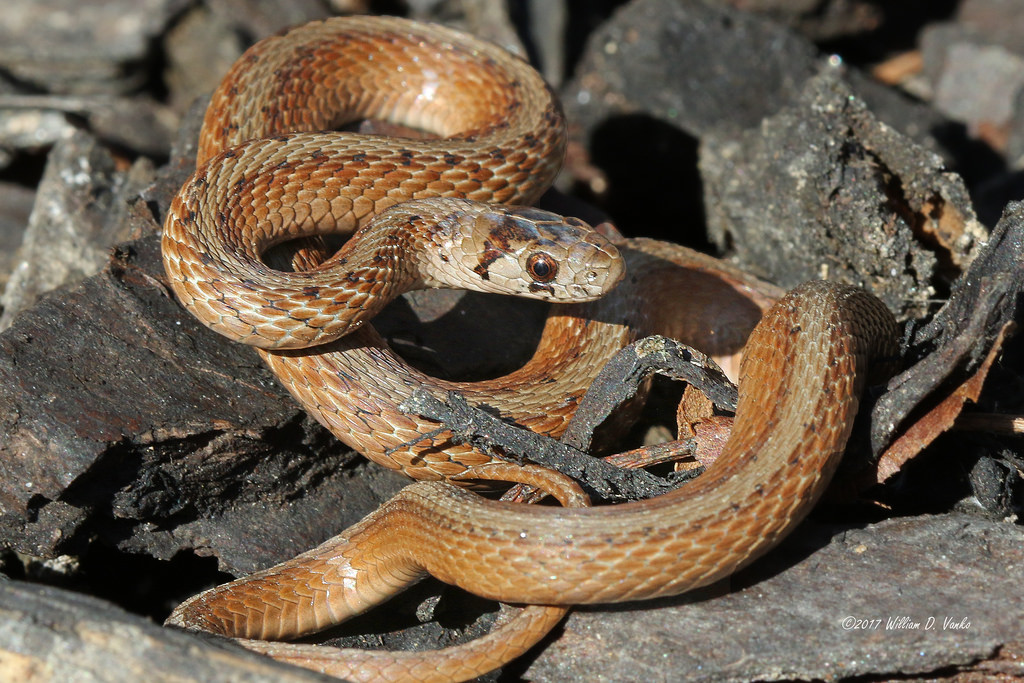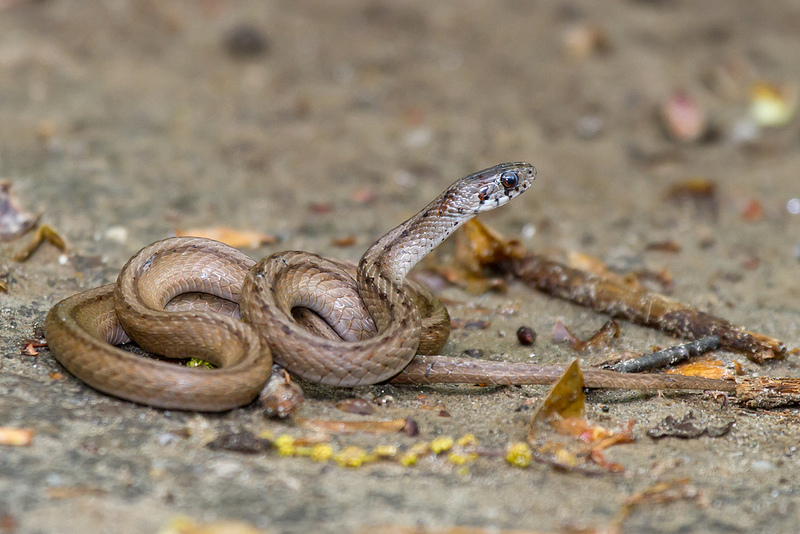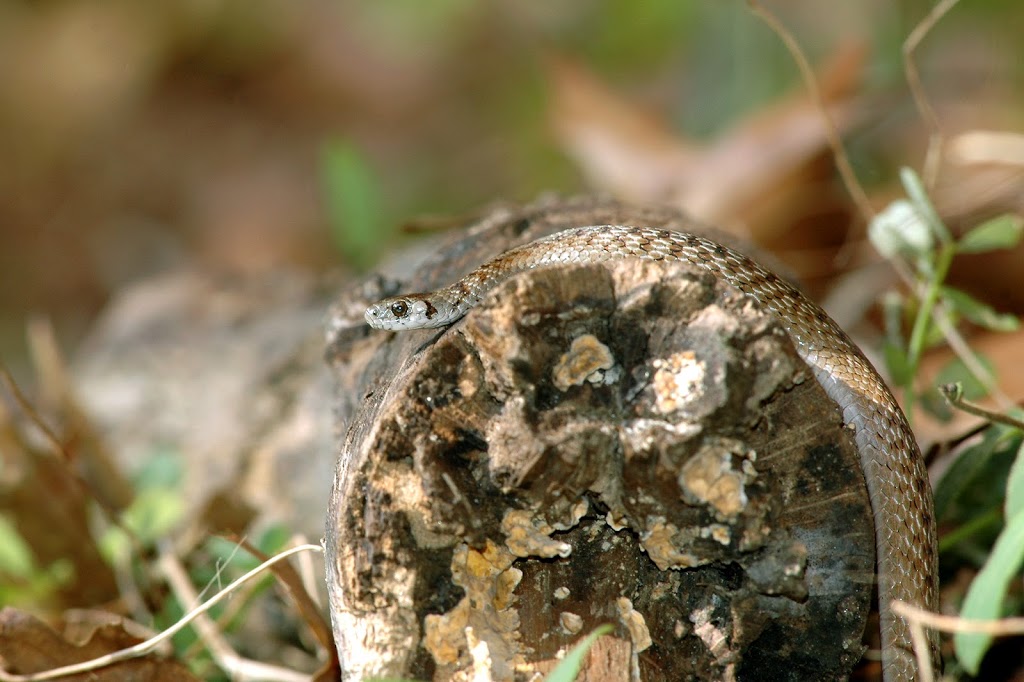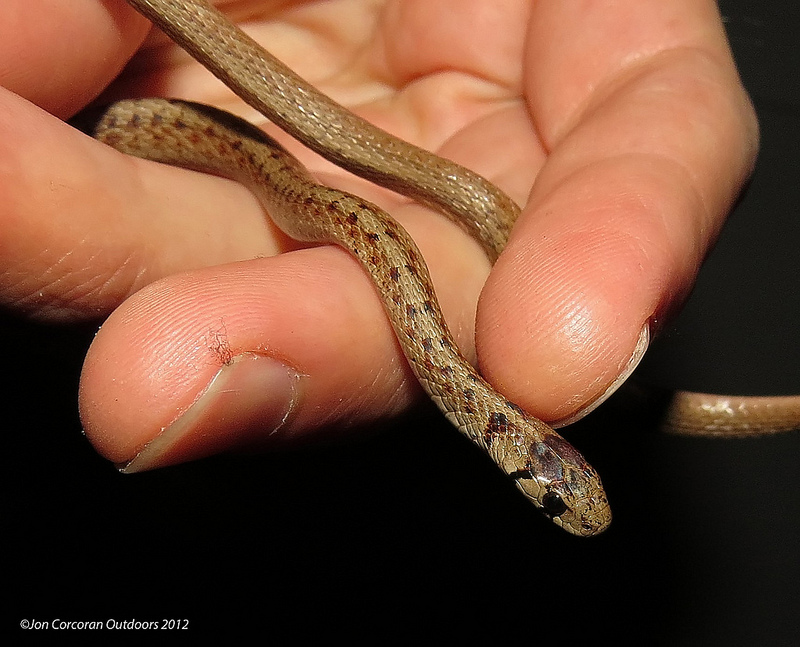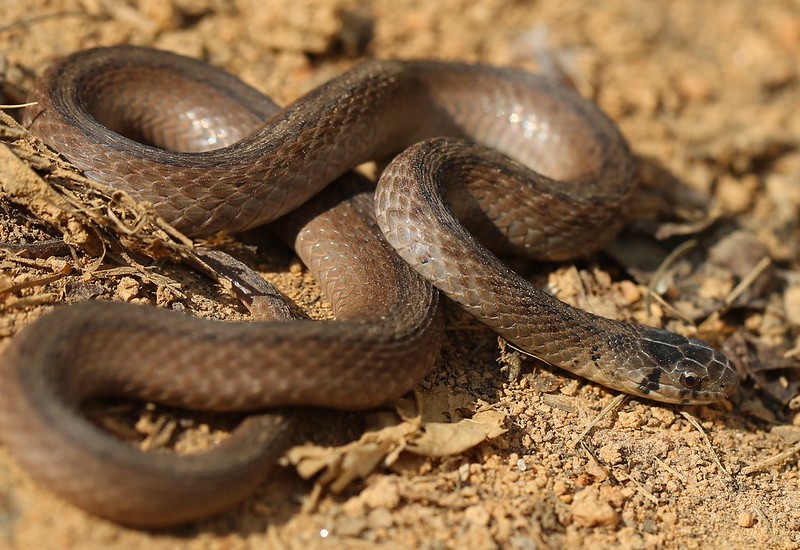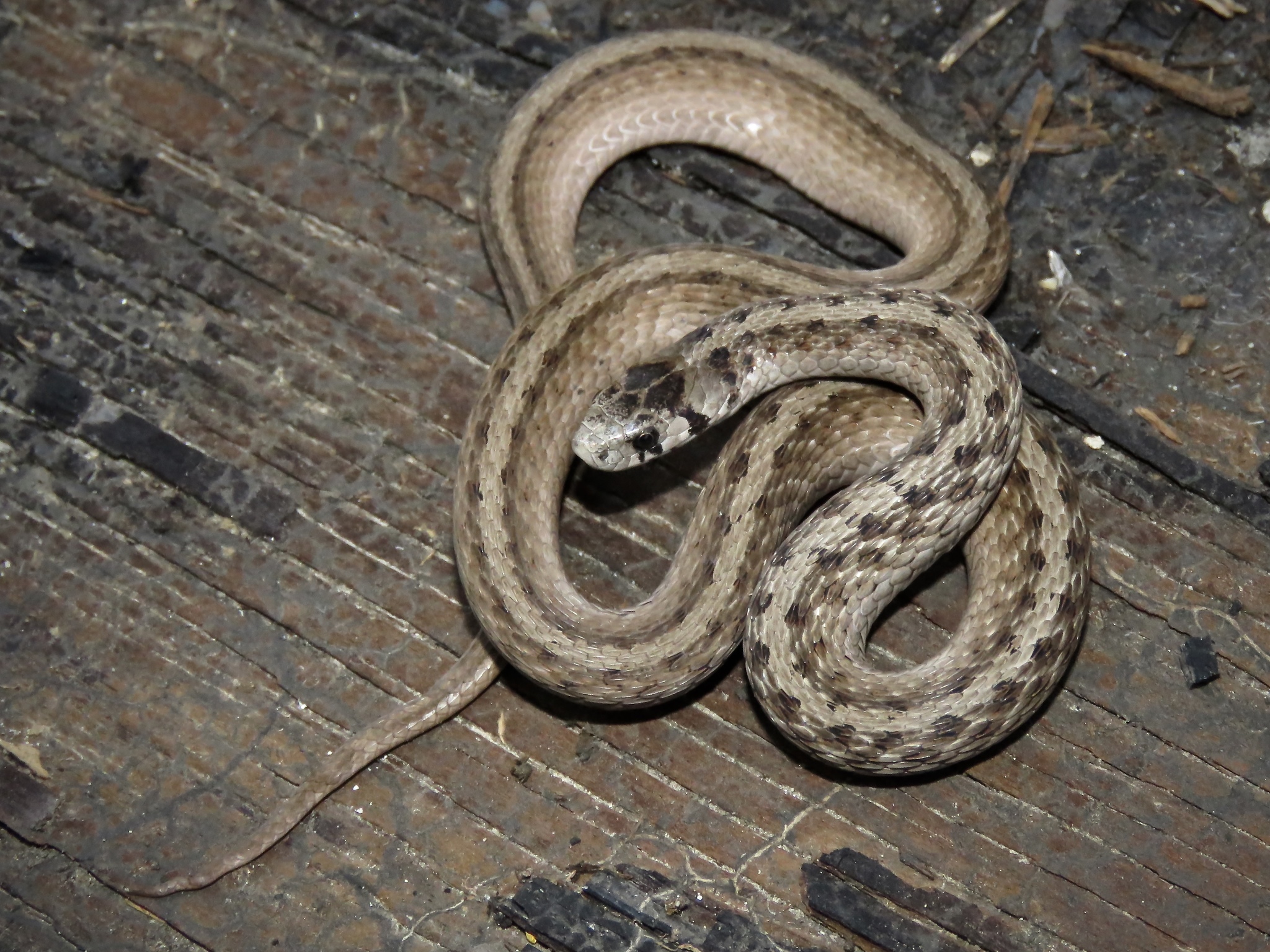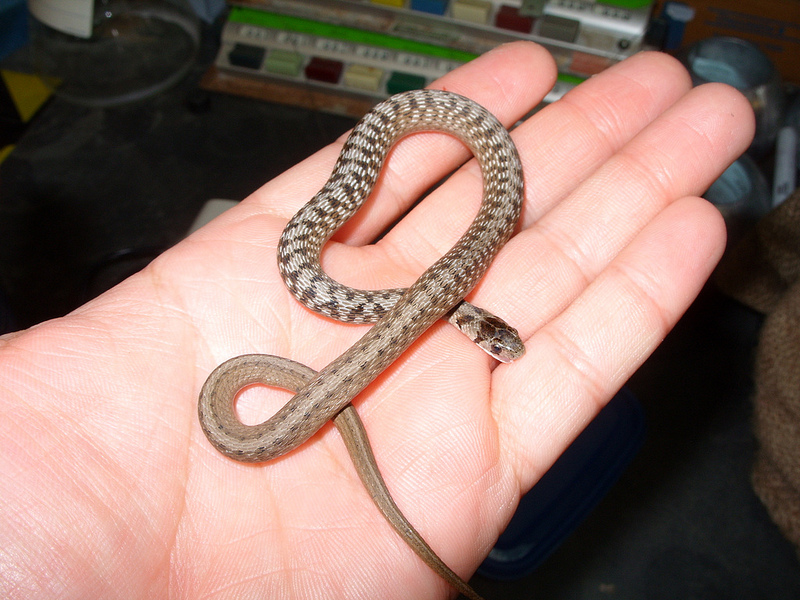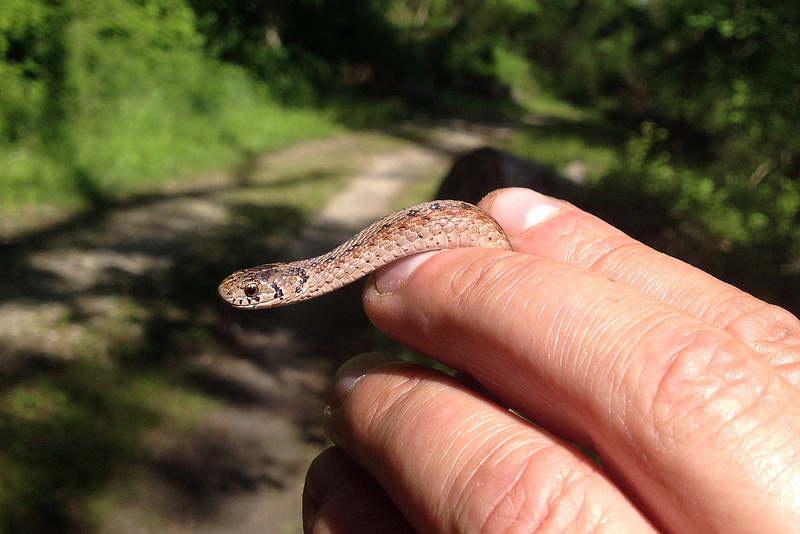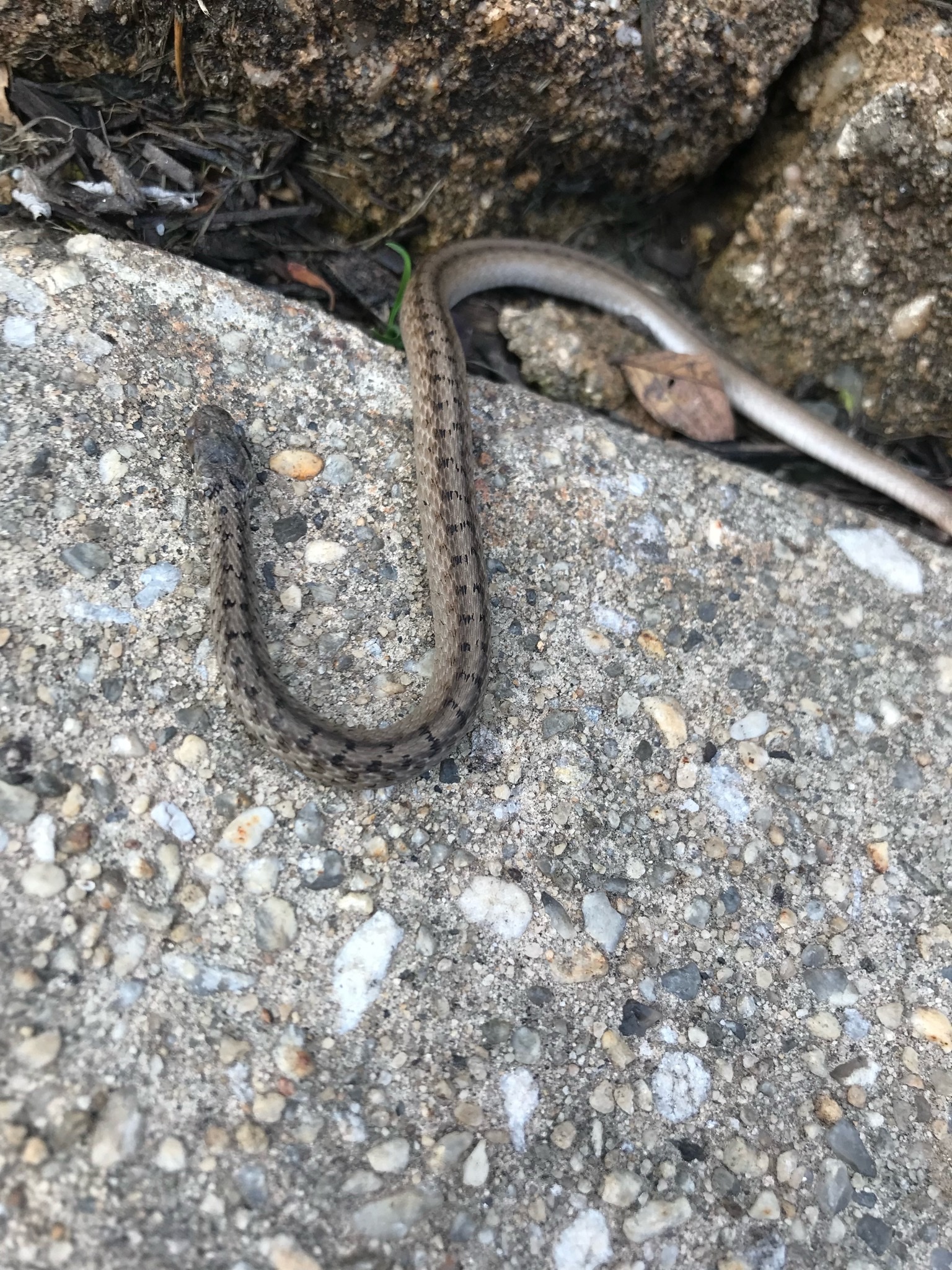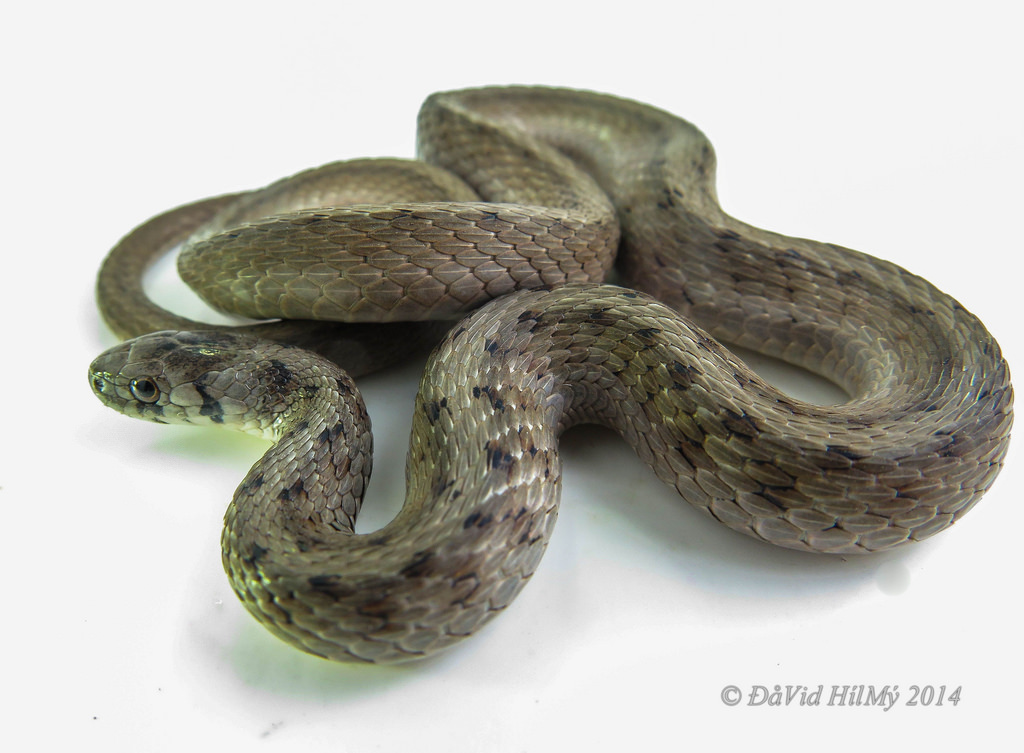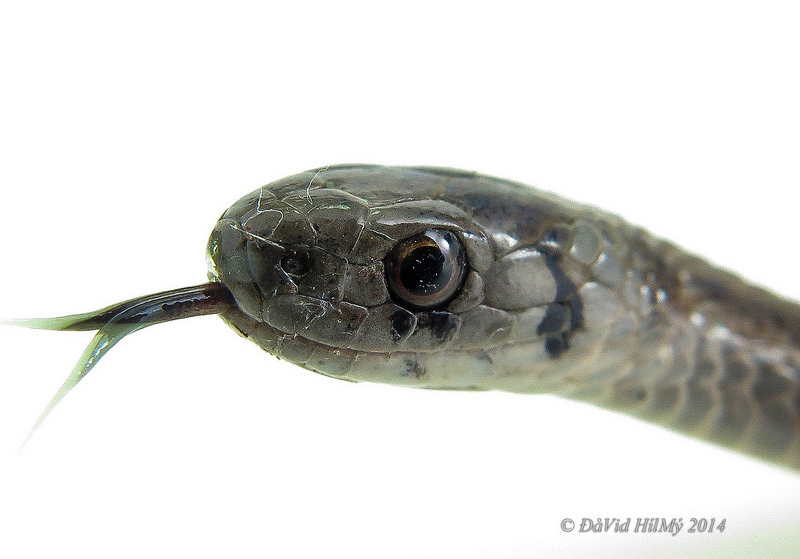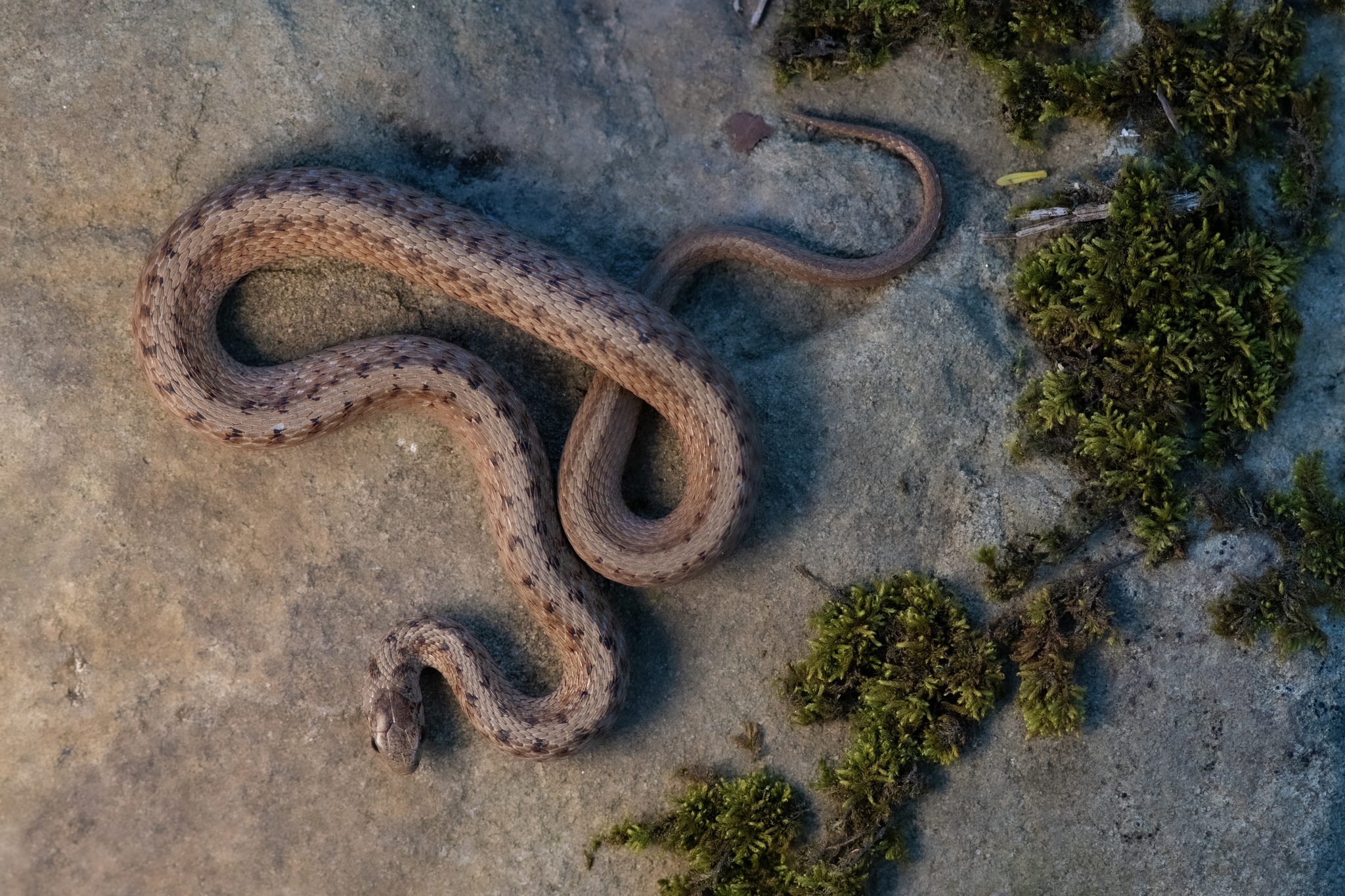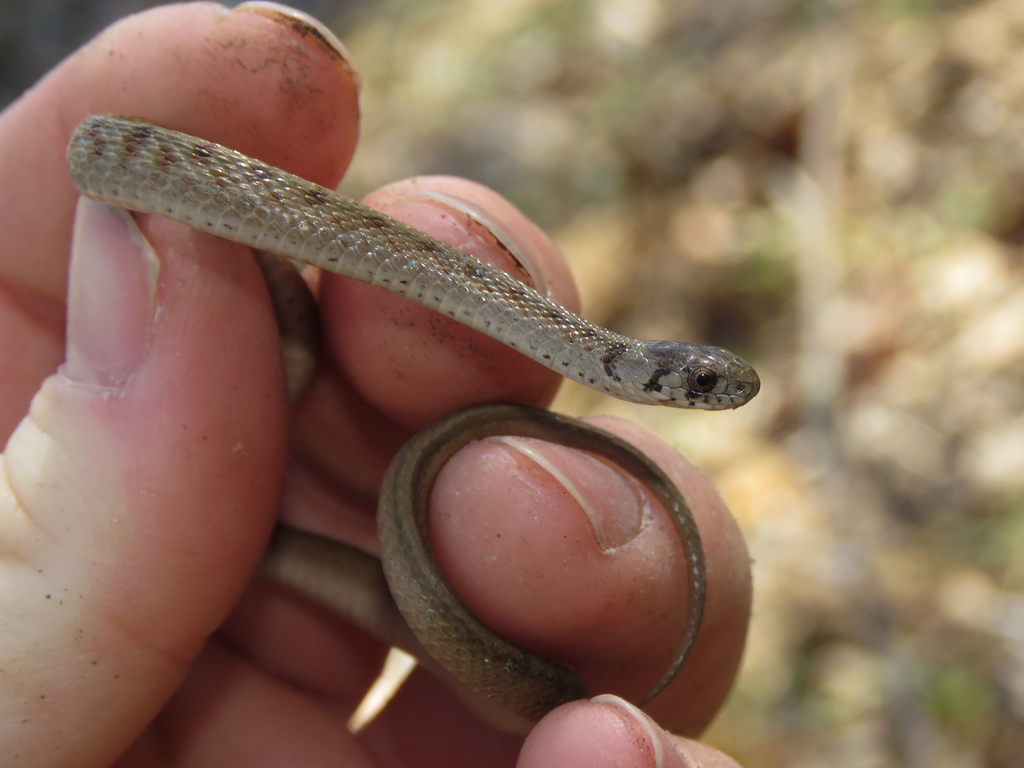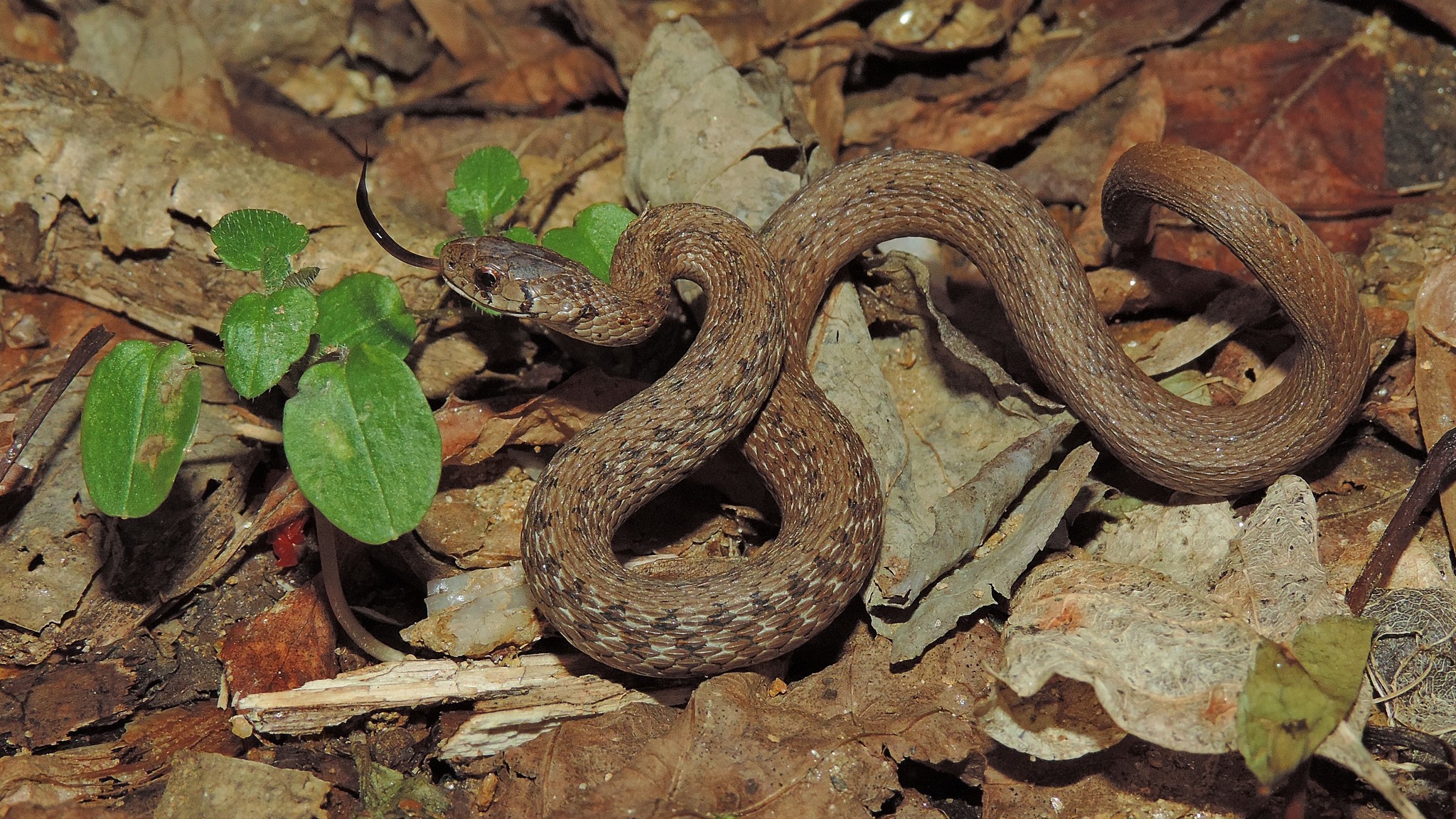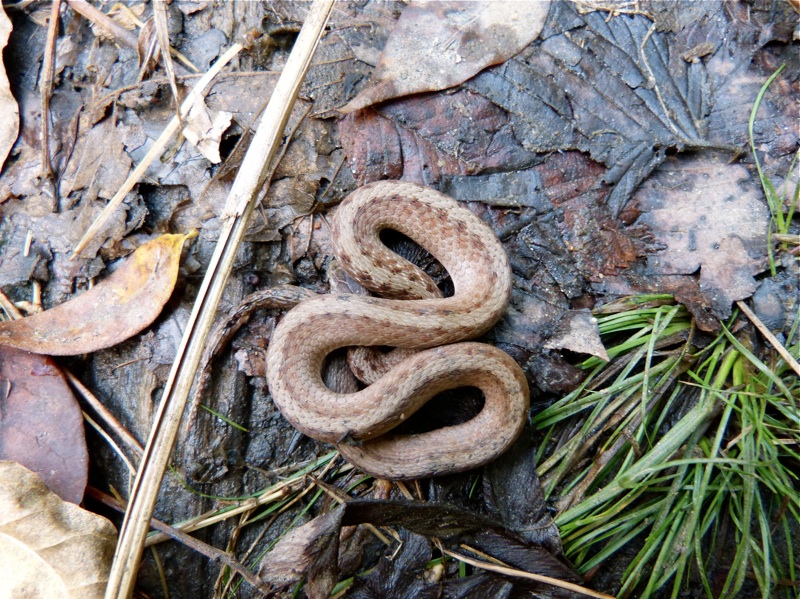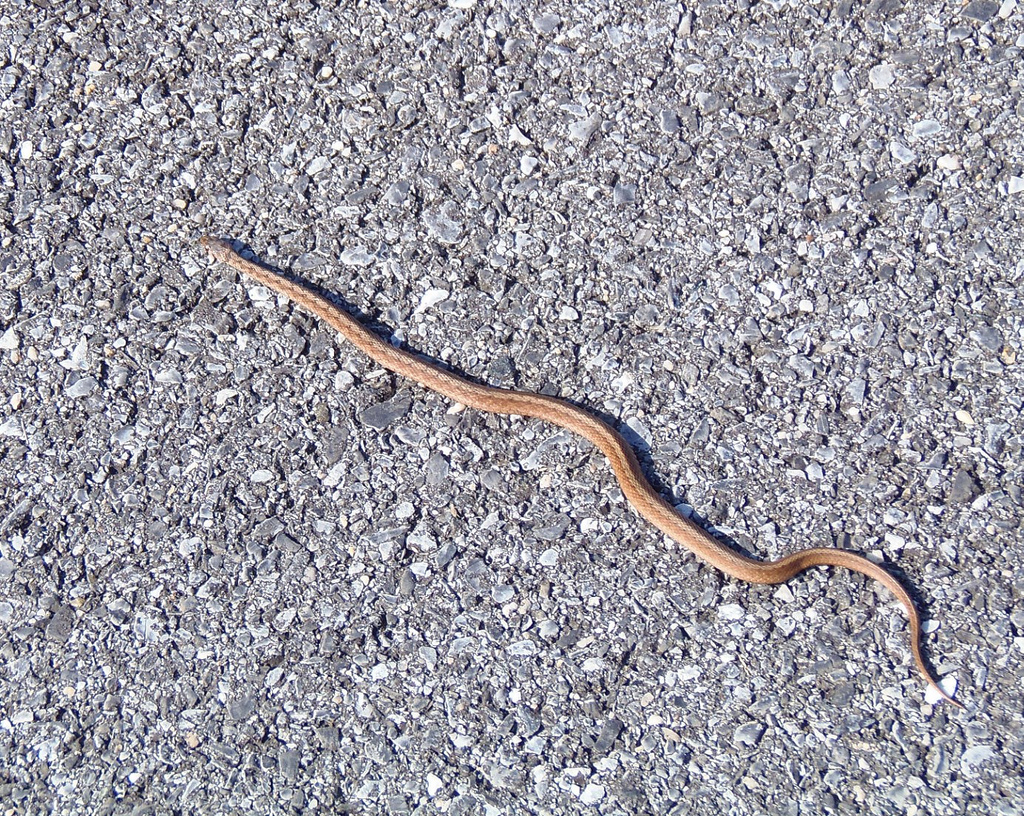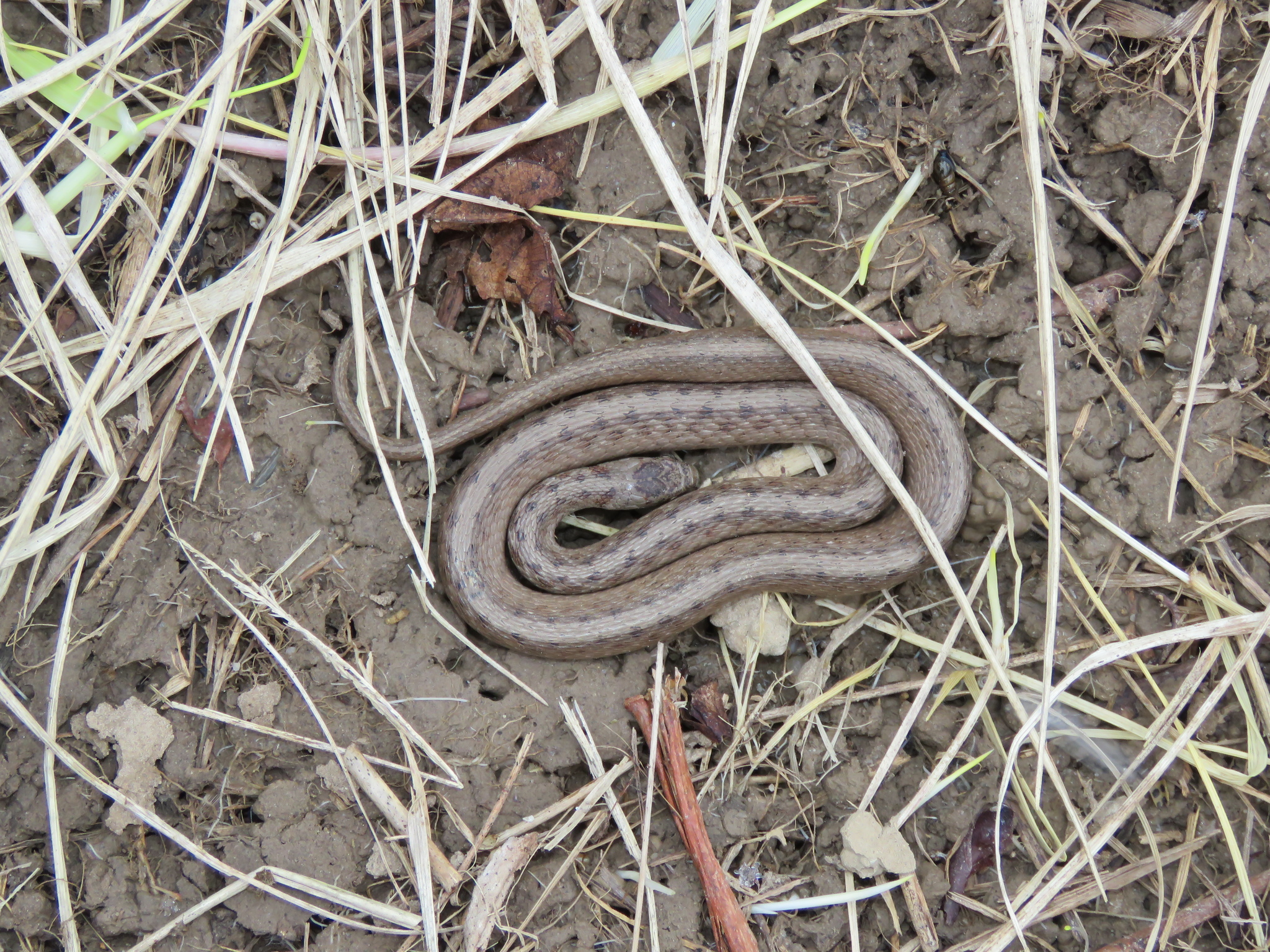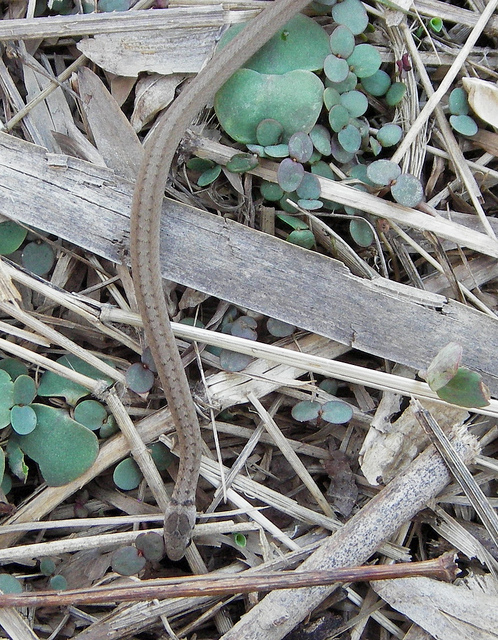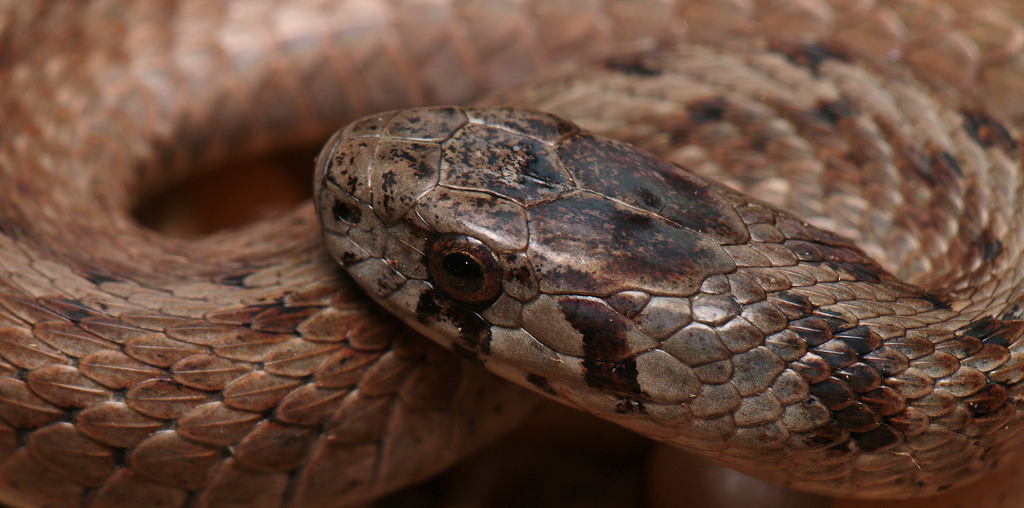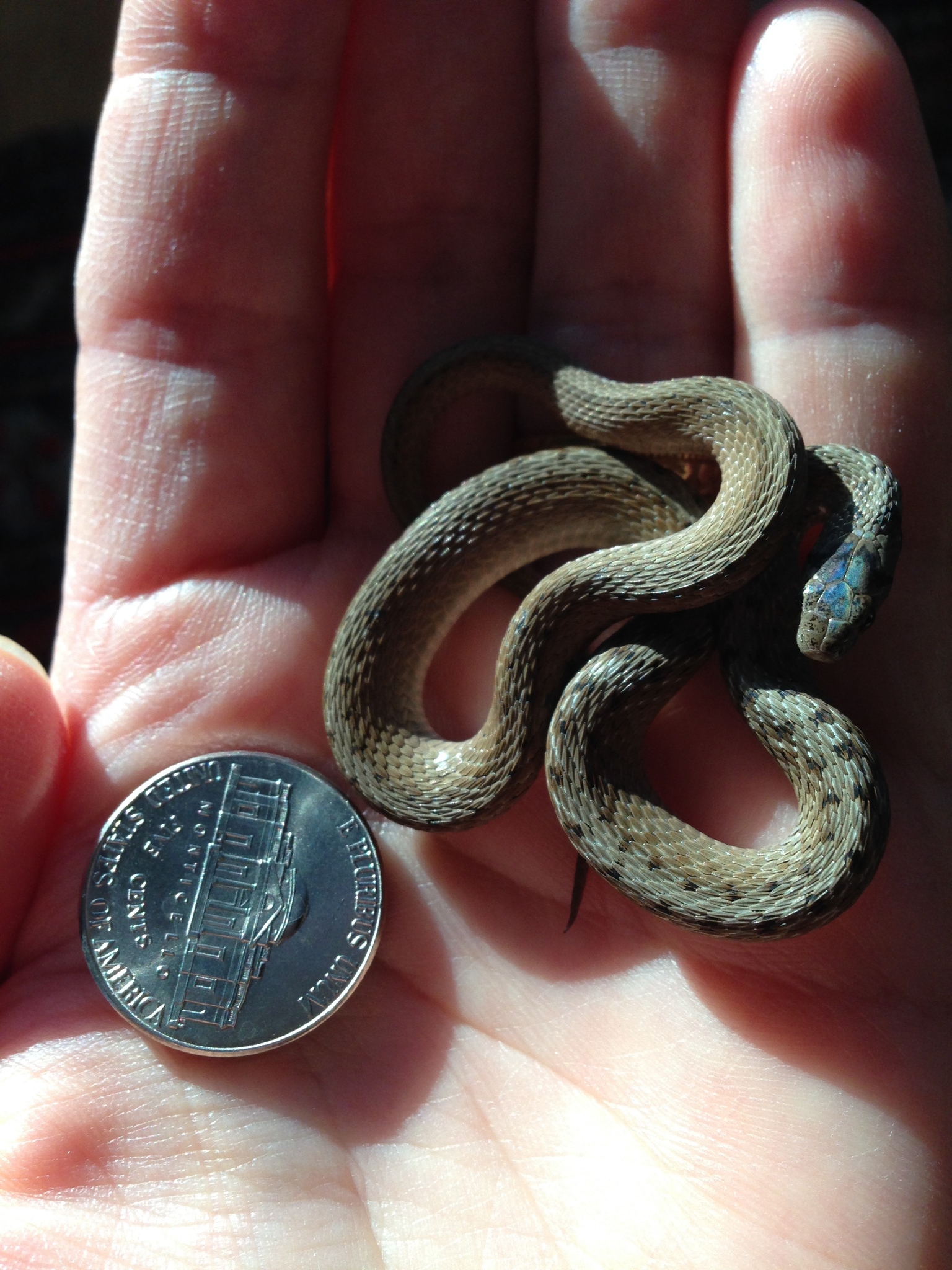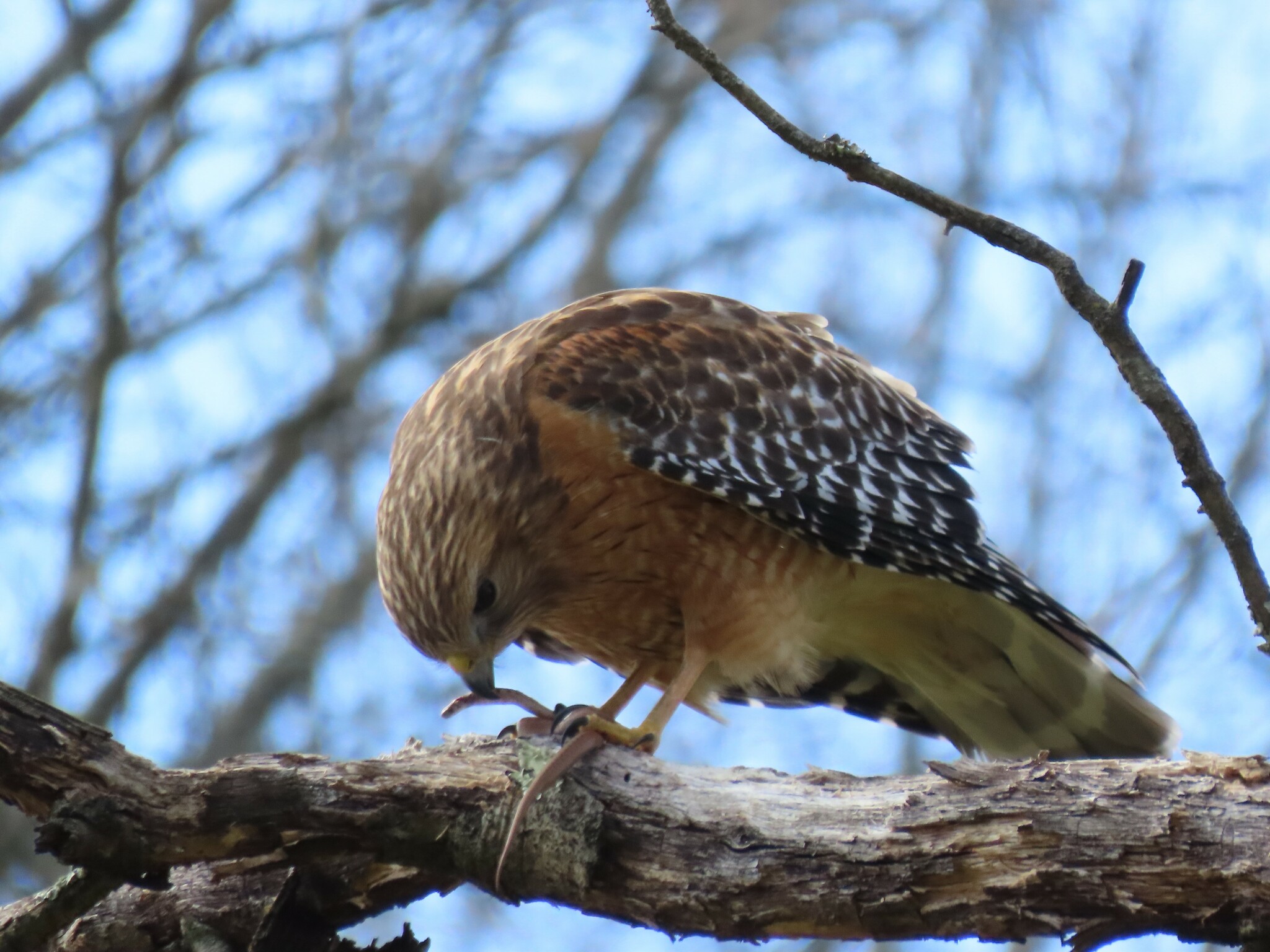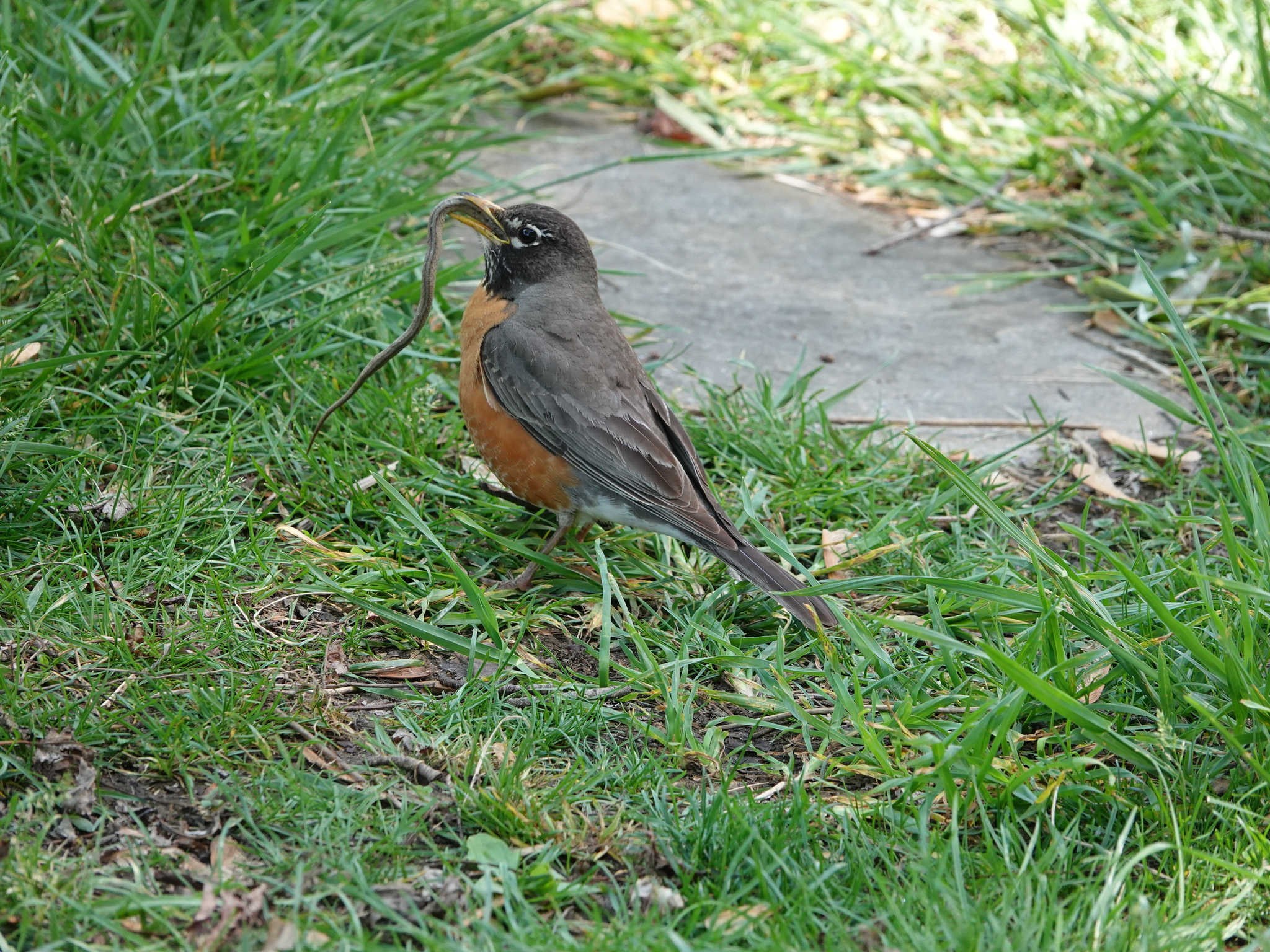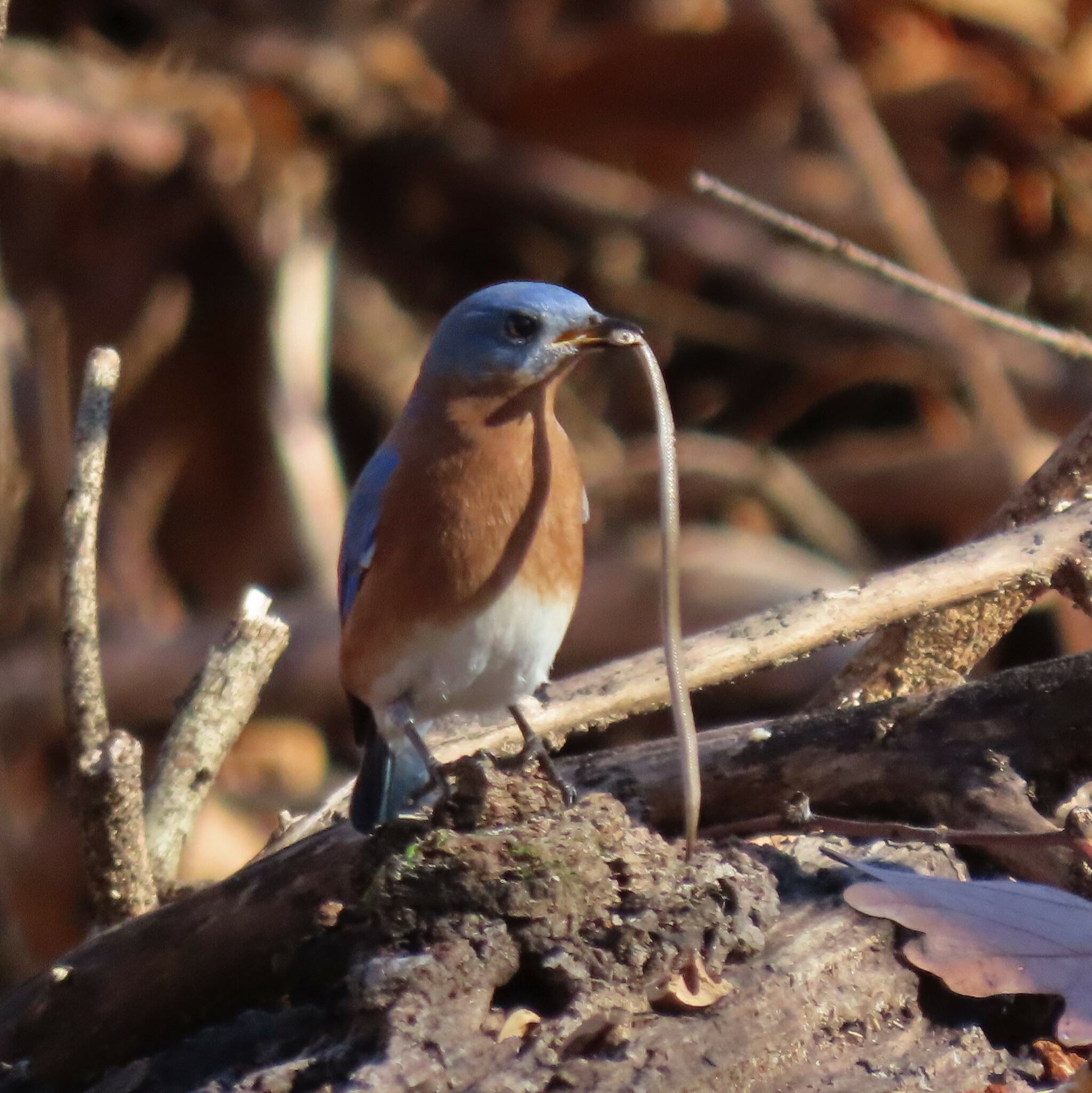Map Snapshot

























887 Records
Status
Northern Brown Snake (Storeria dekayi dekayi) is a widespread snake of modest size, able to survive in a wide range of habitat conditions. This snake may be found in environs ranging from forest to grassy fields or pastureland, and may utilize a wide variety of wetlands and riparian habitats. Northern Brown Snakes are generally fond of surface cover objects, including rocks, logs, boards, shingles, and other debris, where they can locate their preferred prey of slugs and earthworms. These snakes may even be found in less sterile anthropogenic habitats, like vacant lots or edges of suburbs (Tennant, 2003). This is a shy snake, and may be partially nocturnal. Northern Brown Snake is found throughout Maryland (Maryland DNR site).
Seasonality Snapshot
Source: Wikipedia
| DeKay's brown snake | |
|---|---|

| |
| Storeria dekayi | |
| Scientific classification | |
| Domain: | Eukaryota |
| Kingdom: | Animalia |
| Phylum: | Chordata |
| Class: | Reptilia |
| Order: | Squamata |
| Suborder: | Serpentes |
| Family: | Colubridae |
| Genus: | Storeria |
| Species: | S. dekayi
|
| Binomial name | |
| Storeria dekayi (Holbrook, 1836)
| |

| |
| Synonyms[2] | |
| |
Storeria dekayi, commonly known as De Kay's brown snake, De Kay's snake, and simply the brown snake (along with many other snakes), is a small non-venomous species of snake in the family Colubridae.[3][4] The species is native to North America and Central America.
Geographic range
[edit]S. dekayi is native to Southern Ontario and Quebec, most of the eastern half of the United States, through Mexico, Guatemala, Honduras, and possibly El Salvador.[1][2] More specifically, this common species inhabits most wetland and terrestrial habitats east of the Great Plains from sea level to 1,400 meters (4,600 feet) above sea level.[5]
Description
[edit]
Dorsally, S. dekayi is brown to gray with a lighter center stripe bordered by small black spots; ventrally, it is lighter brown or pink with small black dots at the ends of the ventral scales.[6] Adults usually measure less than 12 inches (30 cm) in total length (including tail), but the record total length is 19+3⁄8 inches (49 cm).[7] The dorsal scales are keeled, and it has no loreal scale.[8] Females exceed males in snout–vent length and number of ventral scales while males exceed females in tail length, head dimensions, and number of subcaudal scales.[9]
Habitat
[edit]S. dekayi is a lover of urban areas and tends to frequent cities more often than the countryside. It can also be found in areas such as wetlands, grasslands, and forests, but it is most commonly encountered where humans are found.[10] It prefers moist habitats.[11] Although S. dekayi is solitary, aggregations of individuals have been observed.[12]
Reproduction
[edit]Like other natricine snakes such as water snakes (genus Nerodia) and garter snakes (genus Thamnophis), S. dekayi is a viviparous species, giving birth to live young.[13] Sexual maturity is reached at two to three years. Mating takes place in the spring, after snakes emerge from brumation. Between 3 and 41 young are born in late summer.[14]
Diet
[edit]S. dekayi primarily feeds on slugs, snails, and earthworms.[15][16][17] In the southern extent of its region, the snake usually preys predominantly on earthworms; however, in the northern reaches of its range, slugs are the predominant food source.[16] It has specialized jaws that allow it to remove snails from their shells for consumption.[14] Reports of other invertebrates (such as woodlice, mites, or millipedes) in the diet of S. dekayi are more than likely the result of accidental ingestion rather than intentional feeding, in which one of these invertebrates may have adhered to a slug or other prey item being consumed.[18]
Ecology
[edit]S. dekayi is a prey item for larger snakes, large frogs and toads, birds, and many mammals including weasels and invasive housecats.[19] The milksnake (Lampropeltis triangulum) has previously been reported to be a predator of S. dekayi.[20] An observed predator avoidance mechanism of S. dekayi is coiling the anterior portion of the body and swaying it side to side as it attempts to flee.[21] In addition to this, it releases a foul musk from its cloaca when threatened.[11] The species is shy and rarely found in the open, usually found hiding under rocks or logs for safety and comfort. It will also occasionally burrow. Its most active period is from about March to October.[citation needed]
Etymology
[edit]The specific name, dekayi, is in honor of American zoologist James Ellsworth De Kay (1792–1851), who collected the first specimen on Long Island, New York, while the generic name, Storeria, honors American zoologist David Humphreys Storer.[22][23]
This is the only North American snake whose binomial is a double honorific – that is, both the generic name and the specific name honor people.

References
[edit]- ^ a b Hammerson, G.A.; Mendoza-Quijano, F.; Lee, J. (2013). "Storeria dekayi ". IUCN Red List of Threatened Species. 2013: e.T63928A3131331. doi:10.2305/IUCN.UK.2013-2.RLTS.T63928A3131331.en. Retrieved 12 November 2021.
- ^ a b Species Storeria dekayi at The Reptile Database www.reptile-database.org.
- ^ Stejneger L, Barbour T (1917). A Check List of North American Amphibians and Reptiles. Cambridge, Massachusetts: Harvard University Press. 125 pp. (Storeria dekayi, p. 98).
- ^ Wright AH, Wright AA (1957). Handbook of Snakes of the United States and Canada. Ithaca and London: Comstock Publishing Associates, A Division of Cornell University Press. 1,105 pp. (in two volumes). (Storeria dekayi, pp. 697-714, Figures 205-209, Map 53).
- ^ Christman, Steven P. (1982). "Storeria dekayi". Catalogue of American Amphibians and Reptiles: 1.
- ^ Schmidt KP, Davis DD (1941). Field Book of Snakes of the United States and Canada. New York: G.P. Putnam's Sons. 365 pp. (Storeria dekayi, pp. 227-228 + Plate 25).
- ^ Conant R (1975). A Field Guide to Reptiles and Amphibians of Eastern and Central North America, Second Edition. Boston: Houghton Mifflin. xviii + 429 pp. ISBN 0-395-19979-4 (hardcover), ISBN 0-395-19977-8 (paperback). (Storeria dekayi, pp. 153-156, Figure 35 + Plate 22 + Map 28).
- ^ Smith HM, Brodie ED Jr (1982). Reptiles of North America: A Guide to Field Identification. New York: Golden Press. 240 pp. (Storeria dekayi, pp. 158-159).
- ^ King, Richard B. (1997). "Variation in Brown Snake (Storeria dekayi) Morphology and Scalation: Sex, Family, and Microgeographic Differences". Journal of Herpetology. 31 (3): 335–346. doi:10.2307/1565661. JSTOR 1565661.
- ^ "Dekay's Brownsnake". CT.gov - Connecticut's Official State Website. Retrieved 2023-04-25.
- ^ a b Davis, Drew R. "Dekay's Brownsnake (Storeria dekayi)". Amphibians and Reptiles of South Dakota.[self-published source?]
- ^ Hecnar, S. J., & Hecnar, D. R. (2011). Microhabitat selection of woody debris by Dekay's brownsnake (Storeria dekayi) in a dune habitat in Ontario, Canada. Journal of Herpetology, 45(4), 478-483.
- ^ Blackburn, Daniel G. (23 June 2009). "Histology and ultrastructure of the placental membranes of the viviparous brown snake, Storeria dekayi (Colubridae: Natricinae)". Journal of Morphology. 270 (9): 1137–1154. doi:10.1002/jmor.10650. PMID 19551871. S2CID 24548951.
- ^ a b Seaholm, Leslie (2000). Harding, James (ed.). "Animal Diversity Web: Storeria dekayi ". Animal Diversity Web. Retrieved 23 April 2023.
- ^ Lum, Steven (2022-01-11). "Dekay's Brown Snake (Storeria dekayi): Can they become good pets?". Journeying The Globe. Retrieved 2022-01-12.
- ^ a b Gray, Brian S. (2013). "The relative importance of slugs and earthworms in the diet of Dekay's Brownsnake, Storeria dekayi, from northwestern Pennsylvania" (PDF). Bulletin of the Chicago Herpetological Society. 48 (12): 157–165.
- ^ Gray, Brian S. (2015). "Natural history notes: Storeria dekayi: Diet". Herpetological Review. 46 (1): 108.
- ^ Gray, Brian S. (2013). "Natural history notes: Storeria dekayi: Diet". Herpetological Review. 44 (3): 527.
- ^ Szalay, Jessie; Dutfield, Scott (1 March 2022). "Facts About Brown Snakes". Live Science.
- ^ Ernst, C.H.; Ernst, E.M. Ernst (2003). Snakes of the United States and Canada. Washington, District of Columbia: Smithsonian Press. © The Center for North American Herpetology.
- ^ LeGros, David L. (28 February 2018). "Side to Side Swaying as a Defensive Behaviour in the Dekay's Brownsnake (Storeria dekayi)". The Canadian Field-Naturalist. 131 (3): 235–237. doi:10.22621/cfn.v131i3.1897.
- ^ Beltz, Ellin (2006). Scientific and Common Names of the Reptiles and Amphibians of North America – Explained. http://ebeltz.net/herps/biogappx.html
- ^ Beolens, Bo; Watkins, Michael; Grayson, Michael (2011). The Eponym Dictionary of Reptiles. Baltimore: Johns Hopkins University Press. xiii + 296 pp. ISBN 978-1-4214-0135-5. (Storeria dekayi, p. 68; genus Storeria, p. 255).

Further reading
[edit]- Behler JL, King FW (1979). The Audubon Society Field Guide to North American Reptiles and Amphibians. New York: Knopf. 743 pp. ISBN 0-394-50824-6. (Storeria dekayi, pp. 654–655 + Plate 550).
- Boulenger GA (1893). Catalogue of the Snakes in the British Museum (Natural History). Volume I., Containing the Families ... Colubridæ Aglyphæ, part. London: Trustees of the British Museum (Natural History). (Taylor and Francis, printers). xiii + 448 pp. + Plates I-XXVIII. (Ischnognathus dekayi, pp. 286–287).
- Clausen, H.J. (1936). "Observations on the Brown Snake Storeria dekayi (Holbrook), with especial Reference to the Habits and Birth of Young". Copeia 1936: 98-102.
- Conant, Roger; Bridges, William (1939). What Snake is That? A Field Guide to the Snakes of the United States East of the Rocky Mountains. (With 108 drawings by Edmond Malnate). New York and London: D. Appleton-Century. Frontispiece map + viii + 163 pp. + Plates A-C, 1-32. (Storeria dekayi, pp. 108–110 + Plate C, Figure 14; Plate 21, Figure 60).
- Goin, Coleman J.; Goin, Olive B.; Zug, George R. (1978). Introduction to Herpetology: Third Edition. San Francisco: W.H. Freeman. xi + 378 pp. ISBN 0-7167-0020-4. (Storeria dekayi, p. 117).
- Gray, Brian S. (2014). "Natural history of Dekay's Brownsnake, Storeria dekayi (Holbrook 1836) at a site in northwestern Pennsylvania". Journal of North American Herpetology 2014 (1): 28–39.
- Holbrook JE (1842). North American Herpetology; or, a Description of the Reptiles Inhabiting the United States. Vol. IV. Philadelphia: J. Dobson. 136 pp. (Tropidonotus dekayi, new combination, pp. 53–55 & Plate XIV opposite p. 53).
- Morris, Percy A. (1948). Boy's Book of Snakes: How to Recognize and Understand Them. (A volume of the Humanizing Science Series, edited by Jaques Cattell). New York: Ronald Press. viii + 185 pp. (Storeria dekayi dekayi, pp. 26–28, 180).
- Powell R, Conant R, Collins JT (2016). Peterson Field Guide to Reptiles and Amphibians of Eastern and Central North America, Fourth Edition. Boston and New York: Houghton Mifflin Harcourt. xiv + 494 pp. ISBN 978-0-544-12997-9. (Storeria dekayi, pp. 423–424, Figures 192-193 + Plate 42).
- Zim HS, Smith HM (1956). Reptiles and Amphibians: A Guide to Familiar American Species. A Golden Nature Guide. New York: Simon and Schuster. 160 pp. (Storeria dekayi pp. 106, 156).
External links
[edit]- Brown Snake, Reptiles and Amphibians of Iowa.
